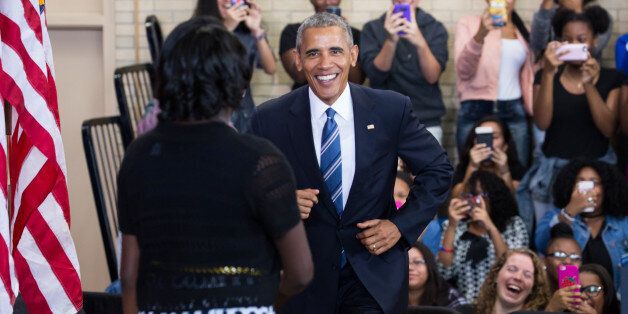
By Nicole Anderson and John Bridgeland
We have seen the narrative too many times. Goals are set, initiatives are launched, and deadlines come and go without much progress. Problems are thought to be chronically unfixable and inertia sets in. Not this time.
After decades of stagnation, data released by the National Center for Education Statistics shows that the high school graduation rate is at a record high of 83.2 percent in 2015, up from 79 percent in 2011 under a consistent, four-year measure all states used for the first time and up from about 71 percent at the start of the century under the best available estimate. These increases mean that two million more students have graduated, rather than leaving high school, since 2000 with better opportunities to go on to college, gainful employment, and engage in their communities.
There is much to celebrate. Nearly every state made progress over the last four years, and the District of Columbia, which has had among the lowest graduation rates in the nation, catapulted more than seven percentage points in the last year. Twenty-eight states have graduation rates above the national average, Iowa leads the nation by crossing the 90 percent threshold, and seven other states are within just two percentage points of our national goal.
What's also encouraging is that progress has been made across every student population, with Black, Hispanic, American Indian, English learners, low-income students and students with disabilities each making in the range of 5- to 8-percentage-point gains from the 2010-11 to the 2014-15 school years. Those who had the furthest to go made the greatest progress, which bodes well for closing worrisome opportunity gaps.
But gaps persist and are strikingly large in many states. Twenty-one states are still below the national average, with New Mexico still not graduating one-third of its students every year. Twenty-eight states have graduation gaps among various student populations that are 20 percentage points or more. English learners and students with disabilities signal the most alarm bells -- with states like Mississippi, Nevada, New York, and Virginia having graduation rates for these populations as low as 29 percent to just over 50 percent, and graduation gaps as large as 40 percentage points or more.
Notwithstanding all of the focus on closing gaps between low-income students and their higher-income peers, 13 states, representing every part of the country, still have double-digit gaps in their graduation rates for these students. While we can applaud the progress made by Black and Hispanic students, Asian/Pacific Islander and White students still have graduation rates that are 15 and 13 percentage points higher than Black students and 12 and 10 percentage points higher than Hispanic students, respectively.
Also worrisome, some states that are close to the 90 percent goal seem to have leveled off or backtracked in their progress, showing that the last gains may be the most difficult to achieve. The nation remains slightly off pace and needs to accelerate its progress in order to reach the 90 percent goal by the Class of 2020.
In the spirit of America, schools, districts and states have increasingly been following the evidence of what works and innovating to improve outcomes for students. Though some skeptics caution that graduation requirements vary across states, the consistent upward trend demonstrates that school success and academic progress are real. In most places, graduation rates have been rising during the very period when it became more challenging to graduate from high school.
Signs of this progress since the turn of the century abound -- a common calculation of graduation rates across the nation; creating cultures within schools and communities where "every student counts;" collecting and using data from early warning systems that help students stay on or get back on track; boosting standards and course offerings that prepare students for postsecondary education; and federal policies that incent excellence, target support for low-performing schools, and hold systems accountable for progress over time.
During this period of reform and change, employers have stepped up to innovate around supports for students and partnerships that will prepare them for the increasing rigors of the workforce. As we continue to reach toward our national goal of 90 percent by 2020, it will be critical that employers double-down on efforts to prepare students and current employees for the challenges of the 21st century workforce with the skills they need to succeed. Now is the time for those engaged to recommit to our national goal, and for those not so engaged to join us in our efforts.
More than a decade ago, most students who dropped out of high school told us they could have graduated -- and longed for more relevance, stronger relationships, and even greater rigor in their education. There is so much more work to be done, but America is addressing its high school dropout challenge and ensuring more young people are on a path to a brighter future.
Nicole Anderson is Assistant Vice President of Social Innovation at AT&T and President of the AT&T Foundation. AT&T Aspire is AT&T's signature philanthropic initiative that drives innovation in education through a $350 million planned investment between 2008 and 2017. John M. Bridgeland is former director of the White House Domestic Policy Council and the author or co-author of more than a dozen reports on the high school dropout challenge.